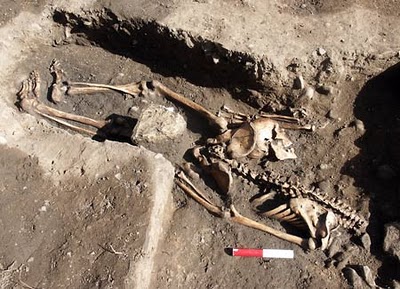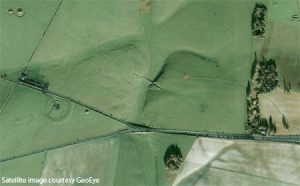 A new research project from the Universit Libre de Bruxelles (ULB) takes us one step further as it comes to understanding Neanderthal locomotion. The Laboratory of Anatomy, Biomechanics and Organogenesis’ (LABO for short) project created a 3D virtual reconstruction of a pair of Neanderthal lower limbs.
A new research project from the Universit Libre de Bruxelles (ULB) takes us one step further as it comes to understanding Neanderthal locomotion. The Laboratory of Anatomy, Biomechanics and Organogenesis’ (LABO for short) project created a 3D virtual reconstruction of a pair of Neanderthal lower limbs.
The skeleton shows the Neanderthals had the same moves as we do and between 5% and 20% more leverage than us.
Homonids (that includes all forms of the human lineage, be it extinct or living) started bipedal locomotion (moving by means of your two rear limbs or, in our case, legs) some 6 million years ago. When you compare our ‘modern man’ gait to that of our fellow hominids, man takes giant steps. But what about the Neanderthals? To which degree is their locomotion comparable to ours?
In the early twentieth century it was believed that Neanderthals were furry (and dumb) creatures, hobbling about. These ideas persisted until the late ’50s, when a more objective analysis of Neanderthal fossils led to the realisation they weren’t that dissimilar to humans. (Thatearly humans thought it ‘not done’ to have sex with those ‘hairy caveman’ was only revised recently.)
Today, it is assumed that the skeletal morphology of the Neanderthals allowed them to walk the same way we do. However, there is little quantifiable data to substantiate this hypothesis. The Homo neanderthalensis has been extinct for some 20,000 years now (sorry to break the news), making direct observation of their walking capabilities impossible.
Another major problem when trying to trace the Neanderthal’s steps, is the lack of fossil record. To date, no complete Neanderthal skeleton has been found, and scientists don’t even have a sufficient number of bones to reconstruct an entire limb.
So LABO’s first objective was to compose a 3D model of Neanderthal lower limbs using fossils found at three different sites the remains used to belong to individuals known as Spy II (discovered in Belgium), Kebara 2 (Israel) and Neanderthal 1 (Germany). To make this ‘virtual assembly’ possible, the researchers had to ‘scale’ the different virtual fragments, taking into account the estimated size of the three Neanderthal individuals.
To determine if the characteristics of the skeleton are consistent with ‘modern locomotion’, the team then merged the 3D reconstruction with movement data obtained from (human) volunteers. The resulting model showed no indication that Neanderthals did not show the same range of motion as humans; Neanderthal joint architecture is mechanically compatible with modern human locomotion.
However, it needs to be noted, walking isn’t just about bones, joints and muscles. Movement is monitored by the brain, and unfortunately data on the Neanderthal brain remains too fragmentary to say whether it was capable of controlling and monitoring of such movements.
Next, information relating to the lower limb muscle was added to the model, as to answer a second question relating to Neanderthal physiology: when compared to our skeletons, how much mechanical advantage did the Neanderthal’s more robust skeleton give to the attached muscles?
The researchers found that at an equal size the reconstructed Neanderthal muscoloskeletal system shows a strength larger than that of modern humans. The Neanderthal’s mechanical advantage is estimated to be 5% to 20% morethan ours. The research (to be published in the journal Palevol under the title Reconstruction virtuelle des membres infrieurs Nandertaliens et estimation des bras de levier des muscle ischio-jambiers) confirms the idea that their big-boned morphology allowed the Neanderthals to be more effective in a hostile environment where increased mobility was likely synonymous with a greater chance of survival.
In cooperation with the Belgian Royal Institute of Natural Science, the LABO is currently working on a more detailed, and complete, virtual model of the Neanderthal skeleton found at Spy. The final model will be used to generate a 3D skeleton (much like was done to Tutankhamen’s mummy?) and a hyper-realistic 3D reconstruction by artists Adrie and Alfons Kennis. Both will be presented at the new ‘Spy Man’ exhibition in the spring of 2011.



